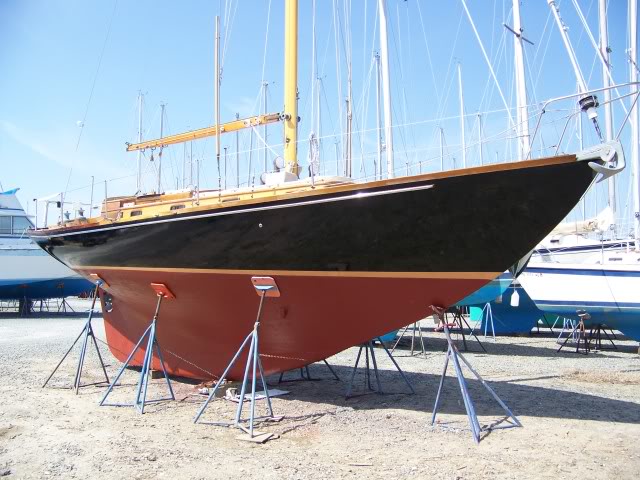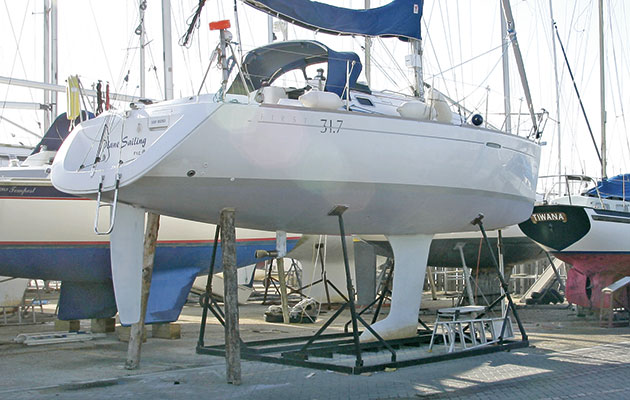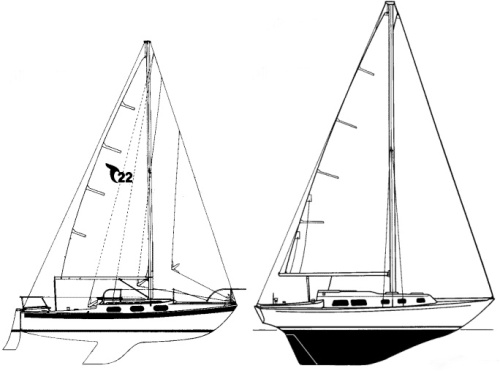Full Keel Vs Fin Keel On Sailboats
There are many types of keels, but the main two categories are Full and Fin Keels. Traditionally, cruising boats had a full keel, and that made them very stable in the water. This design prevailed for decades until the industry began to realize the emergence of a new type of consumer, the weekend vacationer, or sailor. For this new client, those high benefits were not a priority because rarely, if never to say, would he move away from the coast.
What is the Keel For?
Sailboats have keels to reduce the amount of slippage to leeward (the opposite side of the boat the wind is coming from). In essence, the keel of a sailboat has the function of compensating the action of the wind on the sails, preventing dejection, converting that force into thrust, and making the ship stay on course. As a general rule, the heavier and deeper a keel is, the more stable a boat is.
Full Keel or Fin Keel?
Each keel shape has advantages and disadvantages, you will never have the “perfect” keel for your boat. But, the best keel for you and your boat completely depends on the style of sailing that you are planning on doing.
Full Keel Sailboats
Although full keels are by far the least efficient design, they offer incredible strength and versatility. If we want to explore new waters in which we could run aground, or travel offshore, a complete keel will keep our backs better than any other. One thing is certain though, a full keel will never fall off your boat as a fin keel can.

Full Keel Advantages:
- Handles better in tough weather
- Better directional stability
- Maneuver well in downwind conditions
- Better for offshore sailing and ocean passes
- Their movements are softer to be more in tune with the movement of the sea itself.
- Since the full keel runs through the entire hull, the forces exercised on it are transferred to a very large area, so it is often said that they are more robust.
- Thanks to their shape, they respond better to an impact against the bottom than a boat with fin keel, which could be seriously damaged.
- The rudder and propeller are more protected against a possible collision.
- If you stranded with a complete keel sailboat, the forces will be well distributed, the damage will be (in theory) minimal and your biggest concern (although not small) will be to see how to get the boat out of there.
- More stable when sitting still at anchor
Full Keel Disadvantages:
- Slower compared to a fin keel boat
- Handles poorly in winward conditions
- Usually more cramped than fin keeled boats.
- The turning radius is larger, which makes maneuvering in tight spaces difficult, and turning them with a weak wind can be difficult.
- You have to help more with the engine, which translates into increased wear and an increase in fuel consumption.
Fin Keel Sailboats
The fin keel is, by far, the most common type in modern sailboats. A fin keel is a flat, narrow and hydrodynamic piece located under the hull. Unlike the running keel, it is not an integral part of it but is screwed to it. To compensate for the relatively small ballast it provides, the fin keel is usually deeper.

Fin Keel Advantages:
- They are faster than full keel boats
- They maneuver better
- Better for daysailing
- Less resistance to rudder rotation
- Short turning radius
- They usually fit better with tight schedules, such as weekend cruises.
Fin Keel Disadvantages:
- Less robustness and have to be repaired sooner.
- They offer less lateral resistance, which can lead to a strong and sudden heel when a wave or gust of wind hits the boat.
- They do not keep their course as well as a full keel boat and demand more effort and attention at the helm.
- The rudder is more exposed and is more vulnerable to shock and material fatigue. In this sense, an important variation of the rudder is the rudder with skeg. The skeg is a sturdy element that offers support and protection to the rudder.
- If we are stranded with a sailboat with a fin keel, we can find cracks or fissures at the junction of the keel with the hull.
Full Keel Vs Fin Keel – Summary
It is said that fin keels are made to outrun a storm and full keels ara made to weather a storm. So, a full keel sailboat will be slower but more stable during bad weather where a fin keel will be faster but more unstable. A fin keel boat will not have a problem sailing during a storm and you will make it out just fine but you will not be as comfortable or “safe” as in a full keel boat.

Your choice also has to do with the length of the boat you will buy. A very small boat will benefit from a full keel and heavy displacement in terms of seaworthiness and safety. However, a small boat with these characteristics will be a slow one. If speed and time are not your concerns then maybe a full keel is a better match for you.
Like so many things in sailing, there are many tradeoffs in this particular choice, and only you can decide what’s best for you.
So, as you can understand, there not a clear winner in this competition. The answer to this question really does depend on what is the purpose of the boat’s design and your individual needs. Will you be using your boat to cruise, make passages, offshore cruising, offshore racing, coastal racing, etc? You first need to answer these questions and get a boat the checks most items on your “wish list”.
